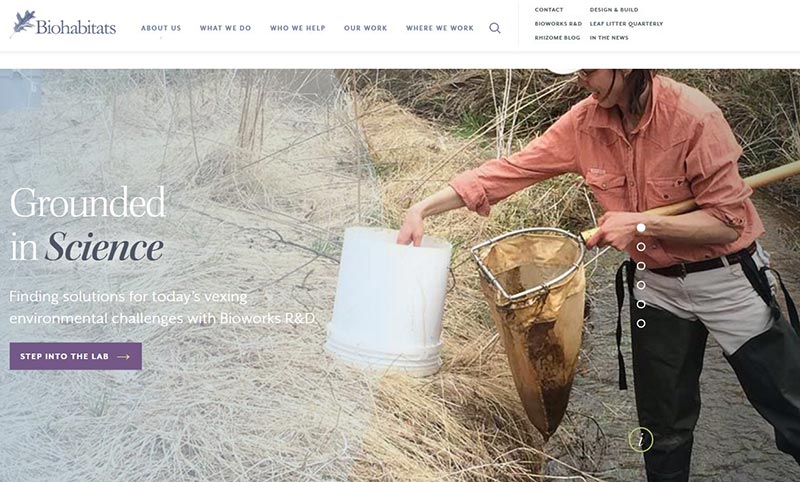Biohabitats Projects, Places, and People
By Amy Nelson
Projects
Georgia Tech’s Biosystems Building Garners 2018 AIA COTE Top Ten Award
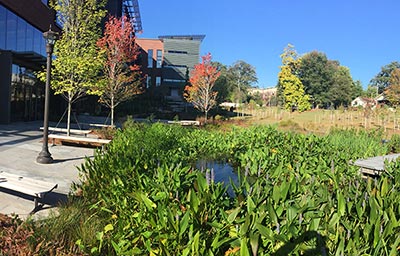
In recognizing Georgia Tech’s LEED Platinum Biosystems Building as one of its Top Ten Award-winning projects for 2018, the American Institute of Architects’ Committee on the Environment (COTE) described it as “An innovative new model for research facilities…creating a system of open lab neighborhoods that foster engagement.” The COTE Top Ten Award highlights projects that meet COTE’s rigorous criteria for social, economic, and ecological value. We are very proud to have worked with Lake Flato Architects and Cooper Carry Architects to plan the building’s highly efficient water system, which harvests rainwater, cools condensate, dewaters the foundation in an above ground cistern, and reuses the water from the cistern to flush toilets in the building. Along with stormwater, any overflow from the system travels through water features into an underground cistern, where it is stored for reuse in irrigation. The 200,000-square-foot research facility is an elegant marriage of technology and intelligent design that will serve as a model for future campus development.
Net Gain for Ecology At DC’s Rock Creek Park Tennis Center
The Rock Creek Tennis Center is located less than six miles from the U.S. Capitol in Rock Creek Park, one of the first national parks established in the U.S. Situated at the headwaters of Blagden Run, a tributary to Rock Creek and ultimately the Potomac River, the 26-acre site boasts 25 tennis courts, a 7,500-seat stadium, and a 3,700-seat amphitheater. It also includes a lot of pavement. Developed before the District enacted its stormwater regulations, uncontrolled concentrated storm flows from these impervious surfaces eroded gullies in the surrounding forested areas, lowered infiltration and groundwater tables, and degraded habitat of native protected species. After the U.S. Fish and Wildlife Service and the National Park Service identified the site as a priority restoration area, the District Department of Energy and Environment launched an ecological restoration initiative. We are thrilled to be helping the District, in a design-build capacity, to restore Blagden Run’s natural hydrology, prevent erosion, reduce stormwater pollution, and restore habitat, by retrofitting more than 7 acres of impervious surface with Green Infrastructure.
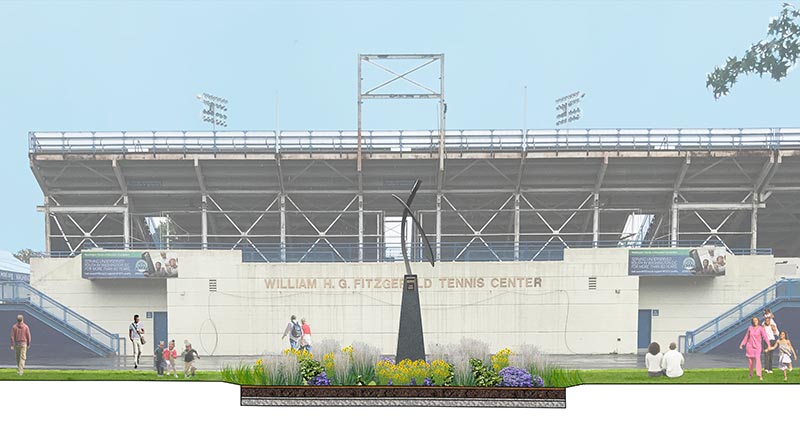
Construction of the project starts this month, which includes eight bioretention basins, sub-soiling compacted fields, disconnecting impervious surface with a level spreader, and installing in-channel stabilization structures in six outfalls, began earlier this month. Once complete, the green infrastructure will not only manage stormwater and enhance habitat, but add beauty and elements of connectivity to the park. Now that’s something to love.
Keep Those Loggies Rollin’

With dewatering efforts underway and logs rolling into the site, construction has begun on the Richardson Creek Habitat Restoration project in Oregon City, OR. In the coming weeks we will be excavating a new channel to replace a straightened and channelized farm ditch (pictured). We will then start installing large wood across the site and reconnecting a floodplain. We are looking forward to working with Metro to increase and enhance habitat for endangered salmonids on this tributary to the Clackamas River.
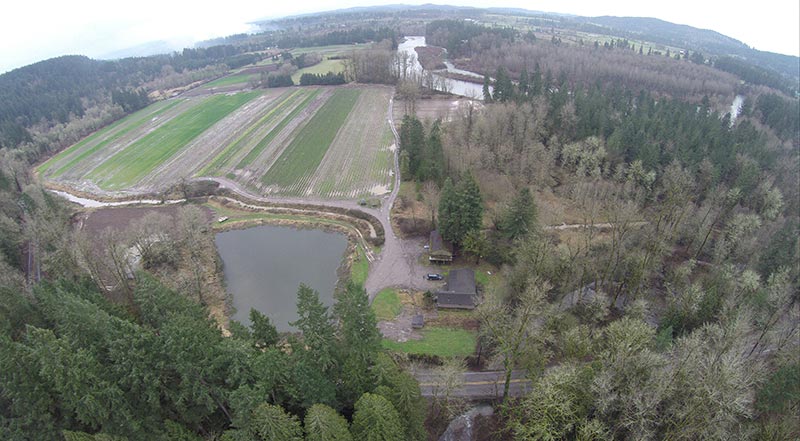
Envisioning A Greener Atlanta
“What makes Atlanta unique today from an ecological perspective?” That is just one of the questions asked of participants in last month’s interactive Urban Ecology Framework Vision and Goals workshop, a gathering of citizens interested in shaping the role of nature in Atlanta’s future. The gathering, hosted by the City of Atlanta’s Department of City Planning, was the latest event for the City’s “Urban Ecology Framework,” an ecology-based study aimed to protect and enhance Atlanta’s unique natural resources and provide equitable access to green space in the face of rapid growth and development. We are honored to be leading a talented and diverse team helping the City to craft this framework. In March, we helped the City launch the project with a series of public engagement sessions where participants shared personal stories and preferences, took part in mapping exercises, and offered honest input and feedback. Informed by those workshops, the City and the project team began the process of defining the community’s vision for the role of nature in Atlanta’s future.
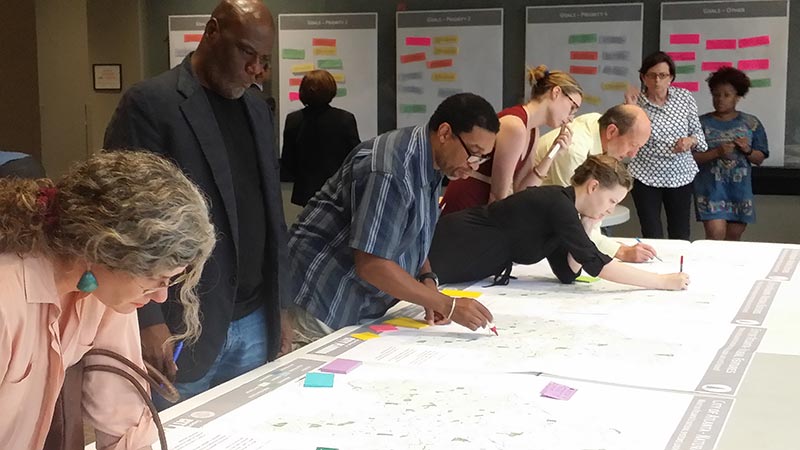
On the heels of that effort, the team has been working on a data analysis of the City’s natural resources and ecosystem services, as well as social and environmental justice considerations. At the end of May, citizens, agency officials, and representatives from nonprofits and community groups participated in a series of Visioning sessions to help refine the vision and goals for the project. This was not your typical public meeting. After beginning with a centering exercise, to help create a space of openness and dialogue, the team shared initial mapping to shape the ecological narrative of Atlanta’s current conditions. Then participants broke into small groups to share their “stories” of Atlanta, based on past, present and future trends. Participants drew on maps to illustrate their vision, and they crafted goals for the framework. By the end of the night, participants had expressed many notions of the future, but the consensus was that the City’s tree canopy and other special spaces where wildlife and water are present must be protected. It is clear that a bold vision is emerging for the City of Atlanta, one grounded in ecology, equity, community, and a shared sense of stewardship.
Chatham University’s Satellite Campus Recognized for Design Excellence
In 2008, when Chatham University was gifted the 388-acre Eden Hall Farm about 30 miles north of Pittsburgh, PA, they set out to create a model campus with district-scale sustainability as a core focus. Today, the campus is home to the new School of Sustainability and the Environment. Designed to support research into topics including sustainable food systems, water and air quality, and the social systems they support, the campus is the embodiment of the University’s original intent. It is also one of only eight sites to receive the 2018 Education Facility Design Award of Excellence from the American Institute of Architects Committee on Architecture for Education). The national awards program recognizes state-of-the-art design of schools and learning centers that enhance modern pedagogy.
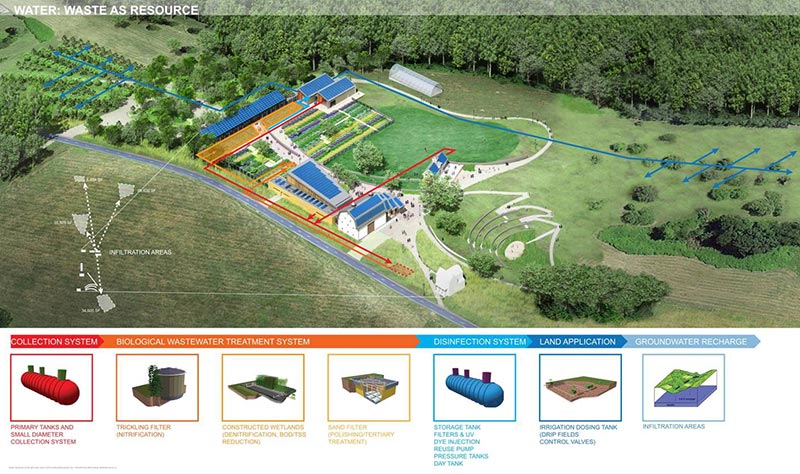
Having collaborated with BNIM, Andropogon Associates, Civil and Engineering Consultants (CEC), and Interface to create the campus master plan, and having worked with Mithun and CEC to engineer and permit the campus’ advanced natural wastewater treatment systems, we couldn’t be prouder of Chatham’s accomplishment!
Urban Ecology Is Abuzz at Baltimore’s Green Street Academy
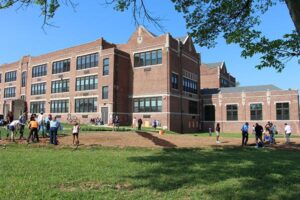 Over the past several months, we have been working with Blue Water Baltimore at Baltimore City’s Green Street Academy (GSA), a public charter school for middle and high schoolers, to improve stormwater management and take advantage of ecological enhancement opportunities on their campus in West Baltimore. Working closely with Blue Water Baltimore, we created designs for a micro-bioretention facility, pollinator meadow, and a raised rain garden planter irrigated with rooftop stormwater runoff. Last month, we teamed up with Blue Water Baltimore, the National Wildlife Federation, and members of the Conservation Corps to help GSA students bring the pollinator meadow to life.
Over the past several months, we have been working with Blue Water Baltimore at Baltimore City’s Green Street Academy (GSA), a public charter school for middle and high schoolers, to improve stormwater management and take advantage of ecological enhancement opportunities on their campus in West Baltimore. Working closely with Blue Water Baltimore, we created designs for a micro-bioretention facility, pollinator meadow, and a raised rain garden planter irrigated with rooftop stormwater runoff. Last month, we teamed up with Blue Water Baltimore, the National Wildlife Federation, and members of the Conservation Corps to help GSA students bring the pollinator meadow to life.
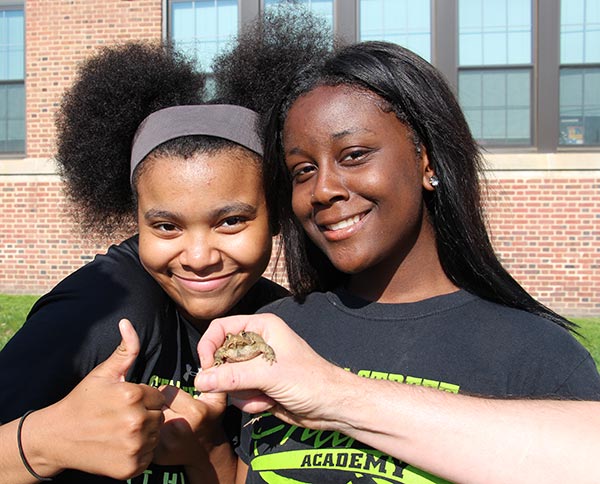
After local dignitaries such as United States Senators Chris Van Hollen and Ben Cardin and Maryland Congressman John Sarbanes kicked things off by officially breaking ground, hardworking students and volunteers moved a mountain of mulch and installed more than 700 native plants. GSA emphasizes the preparation of their students for a world rapidly adapting to and relying upon technology and practices related to sustainability, so we viewed the planting session as an opportunity to create pollinator habitat while also exposing students to skills and careers in ecological restoration as we discussed how each of the three design features functioned together.
Continuing to Jam at Sandy River
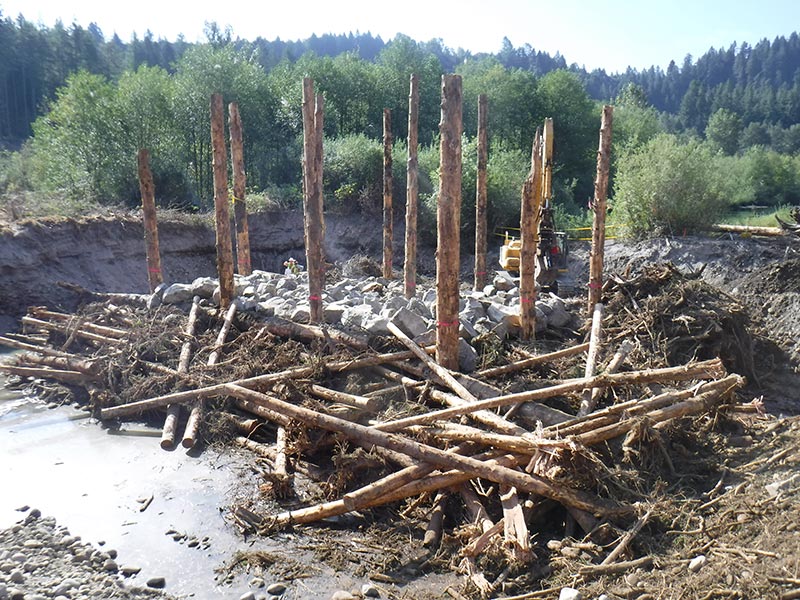
From its origin as snowmelt from the western slopes of Mount Hood, the Sandy River flows 56 miles before emptying into the Columbia River. The river and its tributaries support several anadromous species, including threatened salmon and steelhead. Over the last several decades, human impacts such as a former hydroelectric dam, channelization, reduction of spawning and rearing habitat, and road construction have contributed to a significant decline in salmon and steelhead runs. Last year, we installed the first of the two engineered log jams as part of our effort to help the Portland Water Bureau, Metro, and the Oregon Parks and Recreation Department to restore key habitat for threatened salmon and steelhead along the Sandy River. We are ramping up for round two on the Sandy River with the second large engineered log jam being installed this summer along with side channel excavation and enhancement. We are excited to head back out to this beautiful site within Oxbow Park, and to increase off-channel habitat area for salmonids.
OSU Cascades Garners Campus Planning Award
In April, the Society for College and University Planning (SCUP) recognized the Oregon State University Cascades Long Range Development Plan with the 2018 Honor Award of Excellence in Planning for a New Campus. The SCUP Excellence Awards program is a national “juried competition that showcases how using strategic, integrated planning can result in exemplary buildings, grounds, institutional success, and careers that inspire.” As a part of a team led by the planning firm Page and the architectural firm SERA, and with the University’s sustainable energy and water goals in mind we developed innovative water strategies for the proposed campus. The master plan will expand the Bend, OR campus from its initial 10-acre, 3-building facility to a full 128-acre campus, serving 5,000 students.
Park Packed with Plants at Former Cannery Site
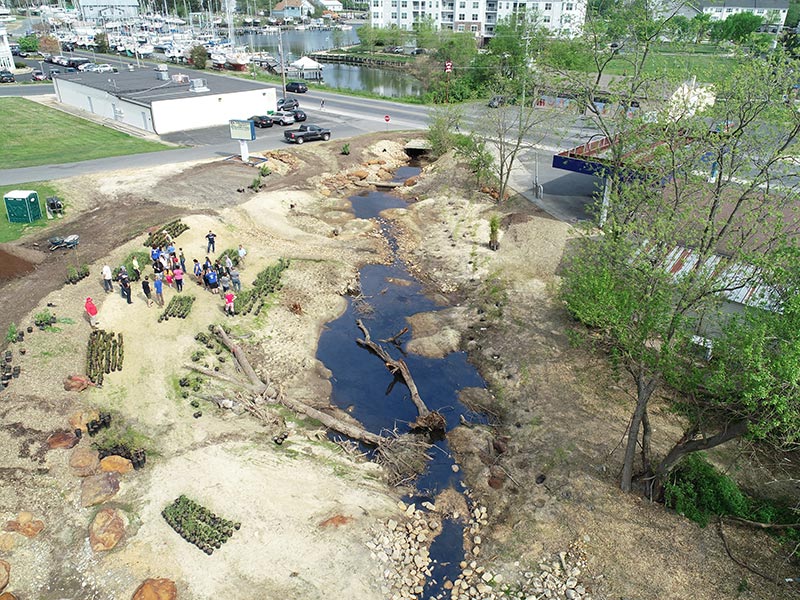
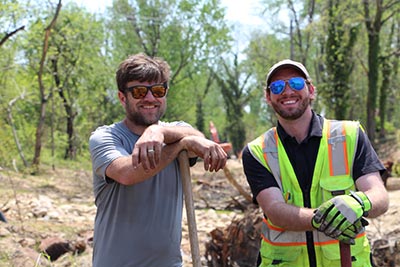
Cambridge, MD is located on the banks of the Choptank River, a major tributary to the Chesapeake Bay. For decades, it was home to the Phillips Packing Company’s “Packing Plant F,” once the largest fruit cannery in the U.S. Vacant since the 1960s, the cannery and its surrounding property are now being redeveloped. The revitalization includes the creation of Cannery Park on the property surrounding the cannery building. A major component of the Park is the restoration and daylighting of Cambridge Creek, which flows directly into the Choptank River. Working with Underwood & Associates on this design-build effort for the City of Cambridge, we are transforming a site referred to in a local news article as “A place rarely looked at since the late 1800s,” into a beaufiful, accessible, and ecologically functioning riverine park.
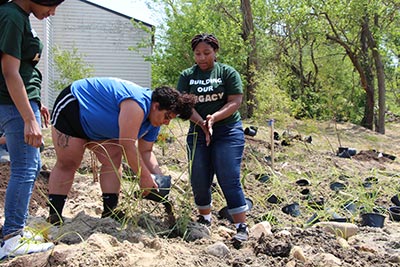
Last month, we received some help installing riparian plants on the downstream end of the project. Hardworking students from Dorchester Career & Technology Center joined volunteers from Maryland DNR and the City of Cambridge, MD in planting native grasses, shrubs, and trees. While we wish we could can and store the energy and enthusiasm of those hardworking volunteers for use in other restoration projects, we know they will remain committed stewards of the restored Cambridge Creek.
Places
We spend a lot of time restoring degraded sites. We thought it was about time we revived our own. After you finish reading Leaf Litter, explore our newly designed web site, where you’ll easily discover ideas for incorporating ecology into your planning and design projects, exciting job opportunities, ways to reconnect your community to nature, and information about the world of Biohabitats.
Don’t miss us at these conferences and events:
June 28 – July 1: Reclaimed Lands Conference, New York, NY
Ecological engineer Chris Streb will lead a session on Pushing the Boundaries on June 28. Hudson River Bioregion leader Terry Doss, landscape architect Michael Spina, and intern Sarah Towne will also be there.
July 30-August 3: International Conference on Coastal Engineering, Baltimore, MD
Water resources engineer Bryan Arvai will be attending.
August 12-15: ASCE EWRI International LiD Symposium, Nashville, TN
Senior water resources engineer Ted Brown will present “I Came, I Saw, I Retrofit” on August 14.
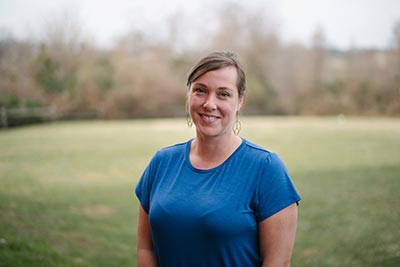
August 13-16: EcoStream 2018, Asheville, NC
Water resources engineer Amy Longcrier will present Stream Restoration as a Cost Effective Technique to Meet TMDL Water Quality Goals on August 14 and senior ecologist Kevin Nunnery will present “Get the Rock Out” on August 16.
August 19-23: EPA Region 6 Stormwater Conference, Albuquerque, NM
Senior engineer Erin English will present “Urban Site Stormwater Retrofits for Net Zero Water, Urban Ecology & Water Resilience” on August 21, and senior water resources specialist and Southern Rocky Mountain Bioregion leader Claudia Browne will present “’Living Networks — Prioritizing stormwater strategies for both human and natural communities sharing a watershed”
August 20: Biochar 2018, Wilmington, DE
Senior ecologist Joe Berg had a burning desire to attend this conference.
August 25: Irvine Nature Center’s Native Plant Seminar, Owings Mills, MD
Biohabitats is proud to sponsor Irvine’s 27th annual Native Plant Seminar, where our own Joe Berg will be a featured speaker.
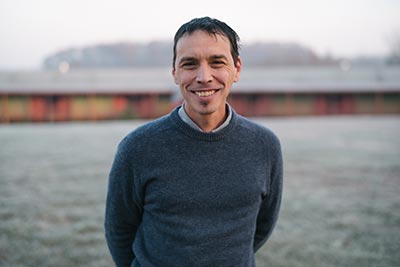
September 10-12: Colorado Open Space Alliance Conference, Grand Junction, CO
We are proud to sponsor this year’s gathering of the Colorado Open Space Alliance. The theme of this year’s event is Ripple by Ripple, Water is the Driving Force in Nature.”
September 14: USGBC Missouri Gateway Chapter Water Infrastructure Continuing Education Blitz, St. Louis, MO
Senior engineer Pete Muñoz will present the keynote talk.
People
Green Infrastructure Expert David Yocca Joins Biohabitats
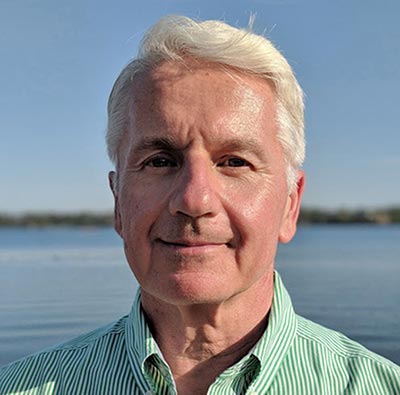
Earlier this month, we welcomed the newest member of our Great Lakes Bioregion team, David Yocca FASLA, PLA, AICP, LEED AP. In his role as Senior Landscape Architect/Ecological Planner, David is leading a field office in Grand Rapids, MI, where he is already applying his 33 years of experience to Biohabitats projects. Before joining us, David was Principal Landscape Architect/Planner at longtime Biohabitats collaborator, Conservation Design Forum (CDF). At CDF, David led such pioneering projects as the Chicago City Hall Demonstration Green Roof and the Iowa Green Street Demonstration in West Union. He was a key contributor to the development of the Sustainable Sites Initiative (SITES™), the first-ever landscape performance rating system, and he is currently the Board chair for the non-profit Green Infrastructure Foundation. David’s passion for enhancing places with truly living, highly functional, and authentically beautiful, ecological landscapes is palpable. We’re thrilled that he is putting that passion to work and helping us bring these qualities to more neighborhoods, campuses, sites, and cities in the Great Lakes region and beyond!
There’s a New P.E. in the Chesapeake/Delaware Bays Bioregion Studio!

Kudos to water resources engineer Katie Talley, who became a licensed Professional Engineer in the State of Maryland last month. Katie works out of Biohabitats’ Chesapeake/Delaware Bays Bioregion office in Baltimore. Way to go, Katie!
Keith Bowers Co-authors New Paper on Principles and Standards in Ecological Restoration
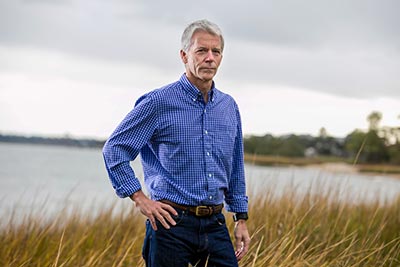
As Biohabitats president Keith Bowers and the other co-authors of a new paper in the journal Restoration Ecology state, “it is truly a remarkable time for the often urgent tasks of helping recover damaged, degraded, or destroyed communities, ecosystems, and landscapes.” Indeed, the practice of ecological restoration has been adopted worldwide. Since its founding in the 1980s, the Society for Ecological Restoration has long debated how to define best practices. The authors of this new paper argue in favor of a principles-first approach, which they claim offers more flexibility for restoration practitioners, is consistent with the developmental stage of restoration, and functions more effectively at a global level. That is not to say that Keith and these other esteemed experts (Eric Higgs, Jim Harris, Stephen Murphy, Richard Hobbs, Willis Jenkins, Jeremy Kidwell, Nikita Lopoukhine, Bethany Sollereder, Katherine Suding, Allen Thompson, and Steven Whisenant) eschew standards altogether. “Effective professional guidance results” they say, “when standards anchored by principles function in a way that is contextual and evolving.” Read more…

Golden Acorn Winner
Every quarter, we award one staff member with the Golden Acorn, an award recognizing an employee who embodies Biohabitats mission and values. The gold color symbolizes purity of purpose in protecting and defending nature, and the acorn symbolizes strength of resolve. Nominees are submitted by the staff. Our most recent Golden Acorn winner was water resources engineer, Rachel Whiteheart. Recipients of the Golden Acorn get to direct a monetary donation to the non-profit organization of their choice. Rachel directed her donation to the Baltimore City Community College Refugee Youth Project, which provides quality after-school and mentoring programs to newly-arrived refugees between the ages of 4 and 21. Rachel also supports the Refugee Youth Project by volunteering. Right on, Rachel!
Meet our Summer Interns:
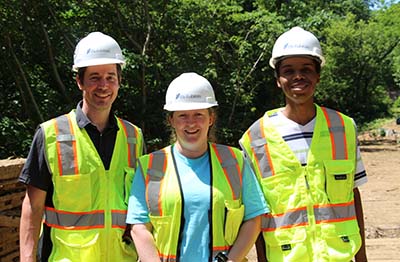
We are delighted to welcome our 2018 summer interns. Anne, Olajuwan, (not pictured) Sarah, Beth, and Andrew will be working on a variety of Biohabitats projects and initiatives this summer.
Chesapeake/Delaware Bays Bioregion
Anne Berg, Class of 2018, Bloomsburg University of Pennsylvania
Olajuwon Anderson, Greenstreet Academy (HS), Class of 2019
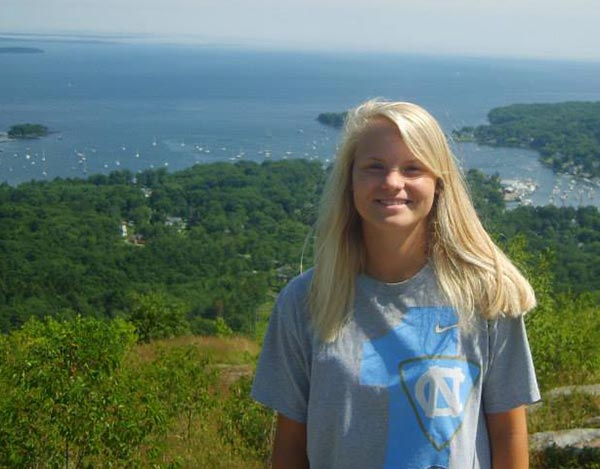
Hudson River Bioregion
Sarah Towne, Cornell University College of Agriculture and Life Sciences, Class of 2019
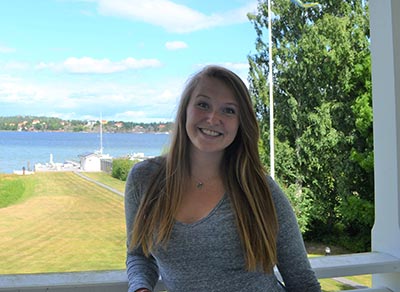
Southern Rocky Mountain Bioregion
Beth Ebisch, American University, Master of Fine Arts in Film and Electronic Media Candidate
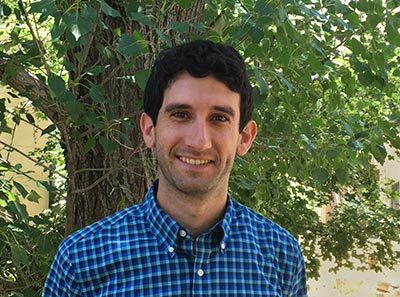
Southwest Basin & Range
Andrew Berger, Cornell University, Masters of Landscape Architecture Candidate 2019
